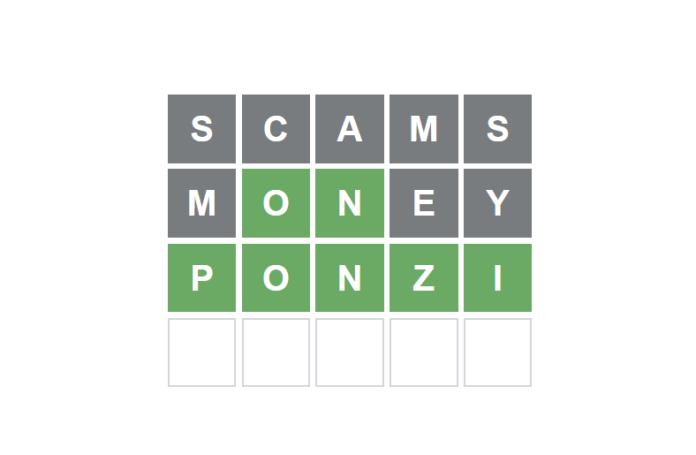The crypto-space is riddled with scammers, rug pulls and Ponzi schemes; spotting the signs is the easiest way to protect yourself. The Merriam-Webster definition of a Ponzi scheme is “an investment swindle in which some early investors are paid off with money put up by later ones in order to encourage more and bigger risks”.
How do Ponzi Schemes work?
Before we dive into the world of Ponzi schemes, it’s essential to distinguish them from Pyramid Schemes. Pyramid schemes, often confused with Ponzi schemes, operate solely on the capital brought in by new investors. On the contrary, the former offers the victims an opportunity to make a commission by recruiting more people into the scheme. The easiest anecdote to explain a Ponzi scheme is “rob Peter to pay Paul”. Essentially, the Ponzi scheme operates by using new investors’ money to pay off the old investors. The Ponzi scheme collapses when no new investors can provide returns to the old investors.
Let’s say Paul comes to you and your friends with a new get rich quick scheme “Invest x amount and see 150% returns in 2 weeks or 200% in 3 weeks!” he says. The naive would take this opportunity, investing $1,000 each. Paul bags your $6,000 from you and your five friends and uses the capital to redistribute and pay off his existing client base. In the meantime, he feeds you false financial reports that deceive you into thinking that your investment is doing well. Paul’s client base gets a small piece of return from the $6,000 he just raised. After pocketing the remainder, Paul deploys the same tactic to the next group of idiots he can fool.
The Origin
Since the inception of modern currency, Ponzi schemes have been around. Still, the term was popularized after Italian swindler Charles Ponzi managed to con $20 million from his money-making scheme. Ponzi promised his clients a 50% profit within 45 days (through arbitraging postal stamps) or 100% profit within 90 days. Ponzi schemes still exist in the modern era. However, regulatory bodies such as FINRA (Financial Industry Regulatory Authority) or the SEC (Securities Exchange Committee) exist to criminalize such activity.
Bernie Madoff directed one of the more notable Ponzi schemes, which coincidentally was the largest Ponzi scheme in history, evidently contributing to the 2008 global crash. Madoff defrauded thousands of investors by stealing over $65bn over 17 years. He was convicted of money laundering, securities fraud, and other crimes serving a 150-year sentence. His scheme advertised returns using the split-strike conversion strategy. In reality, he would be letting the funds sit in his bank account. The MVF – Madoff victim fund was created to compensate victims of the scheme. As of present, the fund has allocated $3.76bn to over 3,800 victims, with attempts to distribute more.
Bitconnect
Another, more recent, Ponzi scheme that stole around $2bn worth of capital is none other than BitConnect. The scheme executed by Indian fraudster Satish Kumbhani was advertised as a high-yield investment lending program. The native token BCC rose from a post ICO price of $0.17 to an all-time high of $463 in December 2017. Shortly after, in January 2018, Bitconnect shut down, and BCC prices crashed over 90% immediately after. The story birthed the Bitconnect meme after Carlos Matos’ extravagant performance on stage at the BitConnect conference in October 2017. Kumbhani was indicted for orchestrating a global Ponzi scheme on February 25th, 2022; since then, he has vanished from his home in India.
Other notorious scams include Romanian “self-help” Ponzi scheme: ‘Caritas’, by Ioan Stoica and Mavrodis’ Russian Ponzi scheme ‘MMM’.
How to spot them
The “too good to be true” approach is best. You should be wary of projects or people that advertise astronomical gains with little risk; moreover, consistent gains despite a declining market is a tell-tale sign of a Ponzi scheme. Any competent investor knows that you can’t always make a profit in the short term. It’s incredibly lucky to always make a return on an investment in a market that has both good days and bad days.
With the boom of cryptocurrencies, the existence of Ponzi schemes is rampant. Stories such as BitConnect go to show that anyone can be a victim. What’s more important is the proper due diligence to identify the red flags before you get fooled into joining one.


